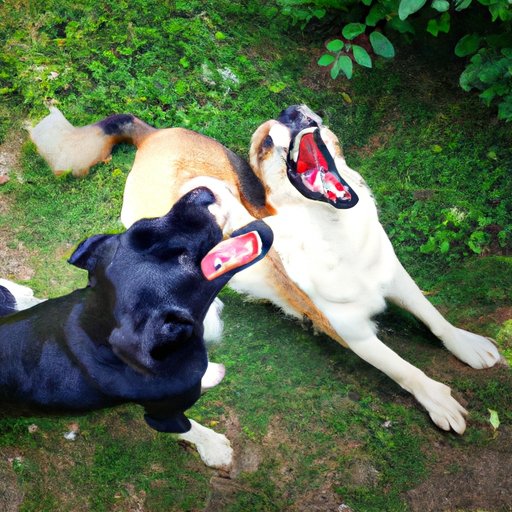
How to Get Dogs to Get Along
Dogs are known for their friendly and sociable nature, but unfortunately, not all dogs get along with each other. Whether you’re bringing a new dog into the family or trying to introduce your dog to other dogs, it can be a challenging and stressful experience for both you and your furry friends. However, there are ways to help your dogs get along. In this article, we will provide you with tips and strategies on how to get dogs to get along.
Introduce Dogs Gradually
One of the essential things you can do to help your dogs get along is to introduce them gradually. This is especially important if you have a new dog that is joining a family with an existing dog. Introducing dogs gradually allows them to get accustomed to the new surroundings and each other’s presence, reducing the chances of aggression.
During the introduction process, it’s important to take certain steps, such as allowing them to sniff each other and keeping them on leashes in case of aggression. You can gradually increase the time they spend together and the situations they’re in, such as longer walks and playtime together.
Provide Neutral Territory
It’s best to introduce dogs in neutral territory rather than in either dog’s territory. Neutral territory can help reduce the likelihood of either dog feeling threatened or territorial. Parks, friend’s backyards, or any open space where neither dog has established their territory can be a great option.
Use Positive Reinforcement Training
Positive reinforcement training is a technique based on rewarding good behavior and ignoring or redirecting bad behavior. This technique is useful in encouraging good behavior and discouraging aggressive behavior, ultimately leading to a more peaceful and harmonious relationship between your dogs.
Examples of positive enforcement techniques include giving treats, praise, or playtime whenever your dogs exhibit good behaviors, such as playing nicely together or showing calmness around each other. This reinforces desirable behavior, making it more likely to be repeated in the future.
Understand Dog Body Language
Understanding dog body language is an essential aspect of getting dogs to get along. Dogs communicate with their bodies and behaviors, so it’s crucial to recognize warning signs of aggression or anxiety. Common signs of aggression include growling, snarling, stiff posture, and raised hackles.
Make sure to supervise interactions at all times and pay attention to your dogs’ behaviors. If you observe any signs of aggression, redirect their attention or separate them calmly and slowly.
Implement Daily Exercise
Daily exercise is critical for dogs’ health and well-being, both physically and mentally. Exercise can help reduce anxiety, stress, and aggression, making it a valuable tool for helping dogs get along. A good exercise routine can also help your dogs build trust and bond with each other.
Make sure your dogs get enough exercise and stimulation daily. Incorporate routine exercises such as walks, playtime, and training in your daily schedule.
Get Professional Help
If your dogs have serious aggression issues, it’s crucial to seek professional help. A dog trainer, behaviorist, or veterinarian can provide advice based on your dog’s particular situation. They can help diagnose underlying issues and provide effective strategies to help your dogs get along.
Professional help is especially important if your dogs have a history of aggressive behavior or if they are exhibiting severe aggression towards each other. Don’t hesitate to seek help and advice from a trusted professional to help your dogs get along.
Monitor Interactions
Lastly, it’s essential to monitor your dogs’ interactions at all times, particularly when you are still introducing them to each other or if they are still building their bond. Don’t leave them alone until you’re confident that they can be trusted together.
Keep a close eye on them and intervene if necessary, redirecting their attention or separating them if they show any signs of aggression. Consistency and patience are key when building a positive relationship between your dogs.
Conclusion
Helping your dogs get along may take time and patience, but it’s worth it. By following the tips and strategies laid out in this article, you can help reduce aggression and establish a stronger bond between your furry friends.
Remember to introduce dogs gradually, provide neutral territory, use positive reinforcement training, understand dog body language, implement daily exercise, seek professional help if necessary, and monitor interactions closely.





